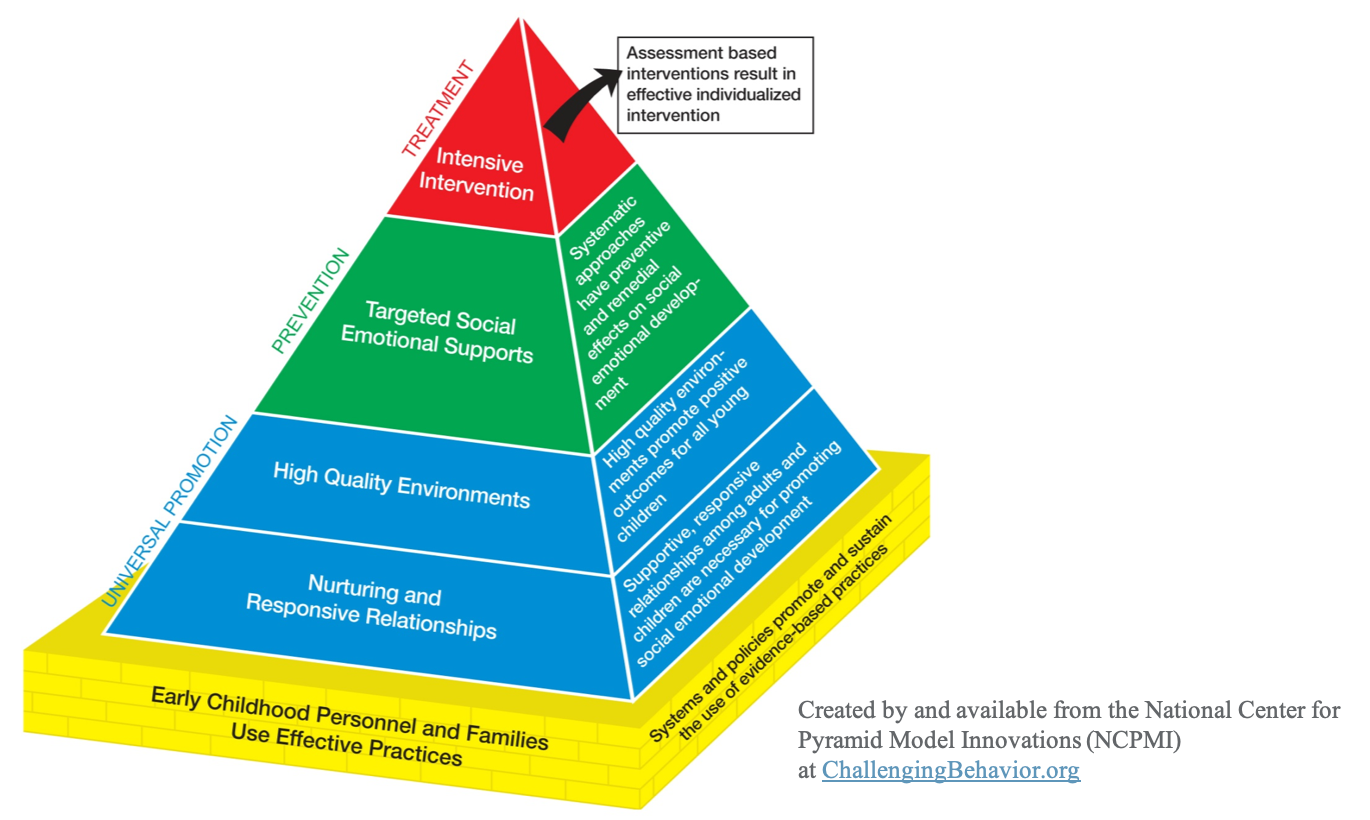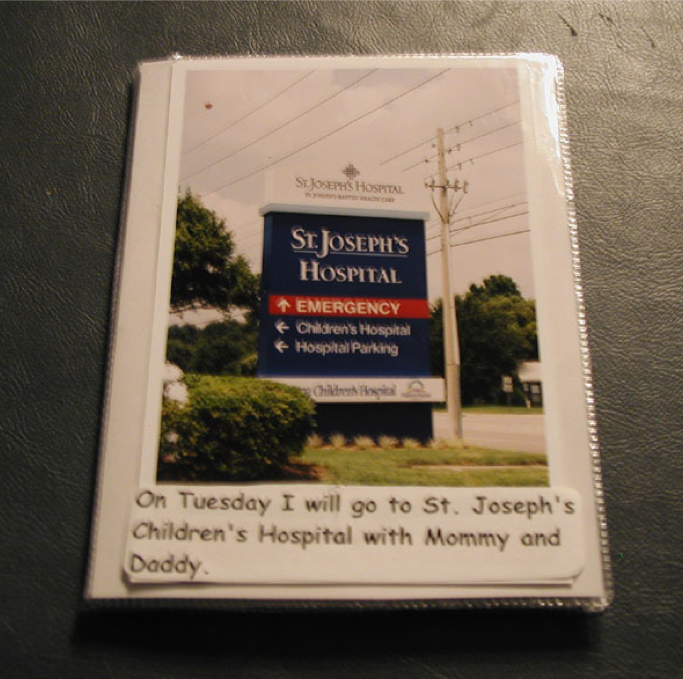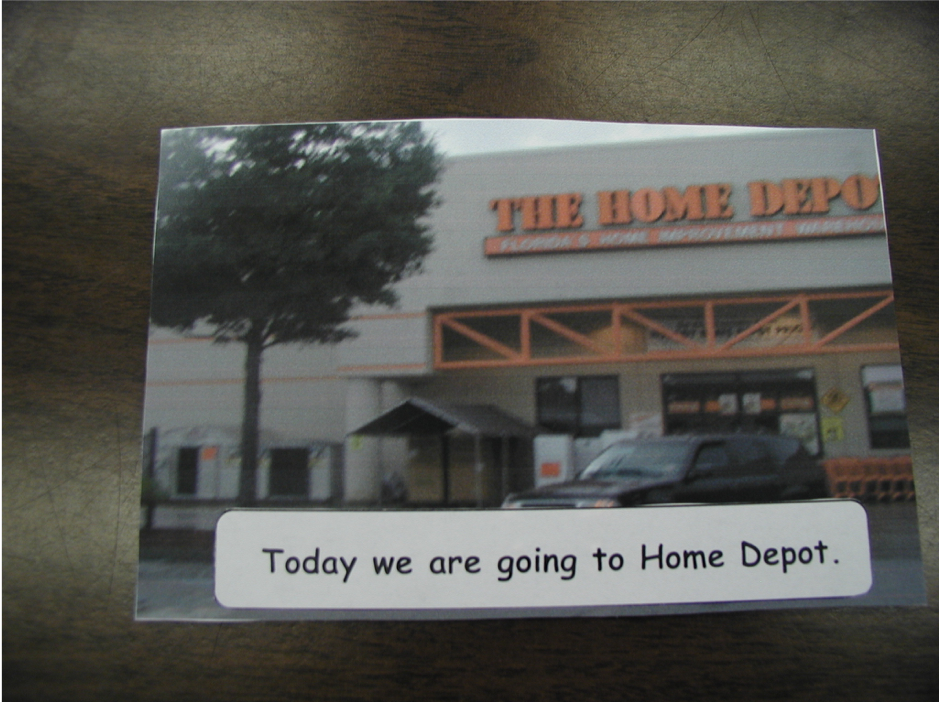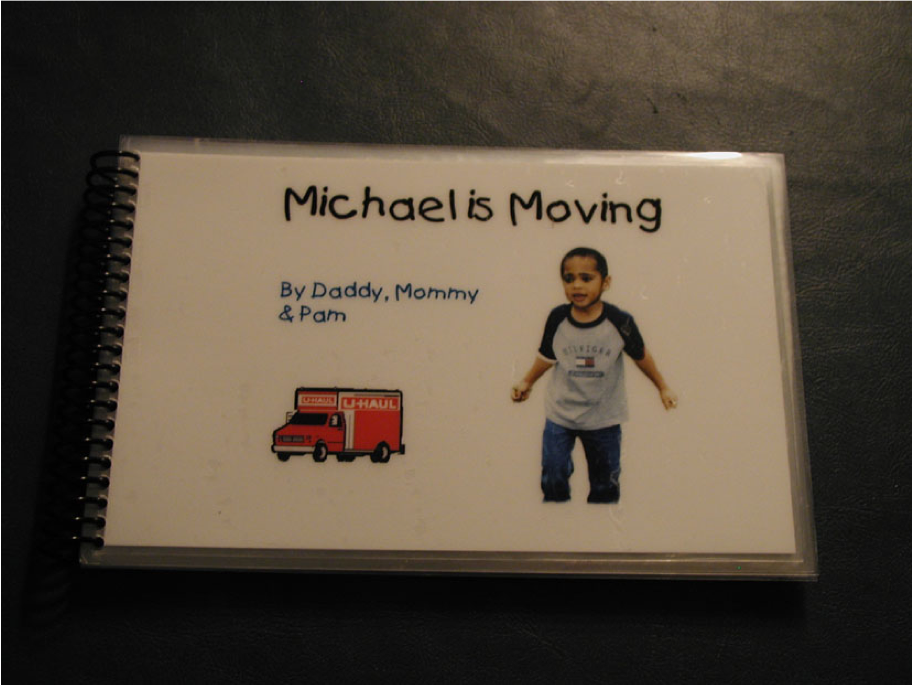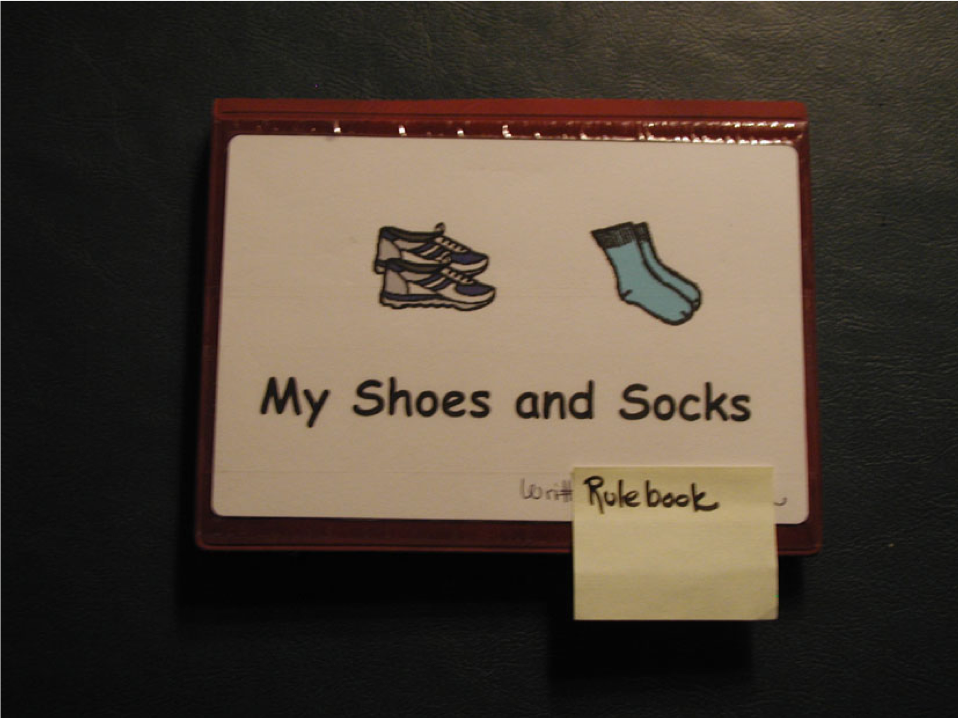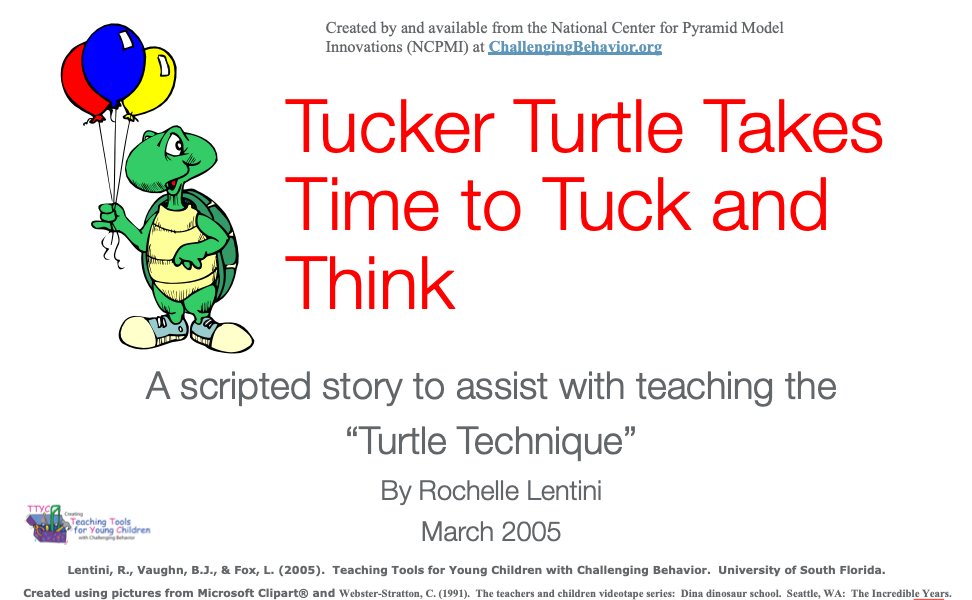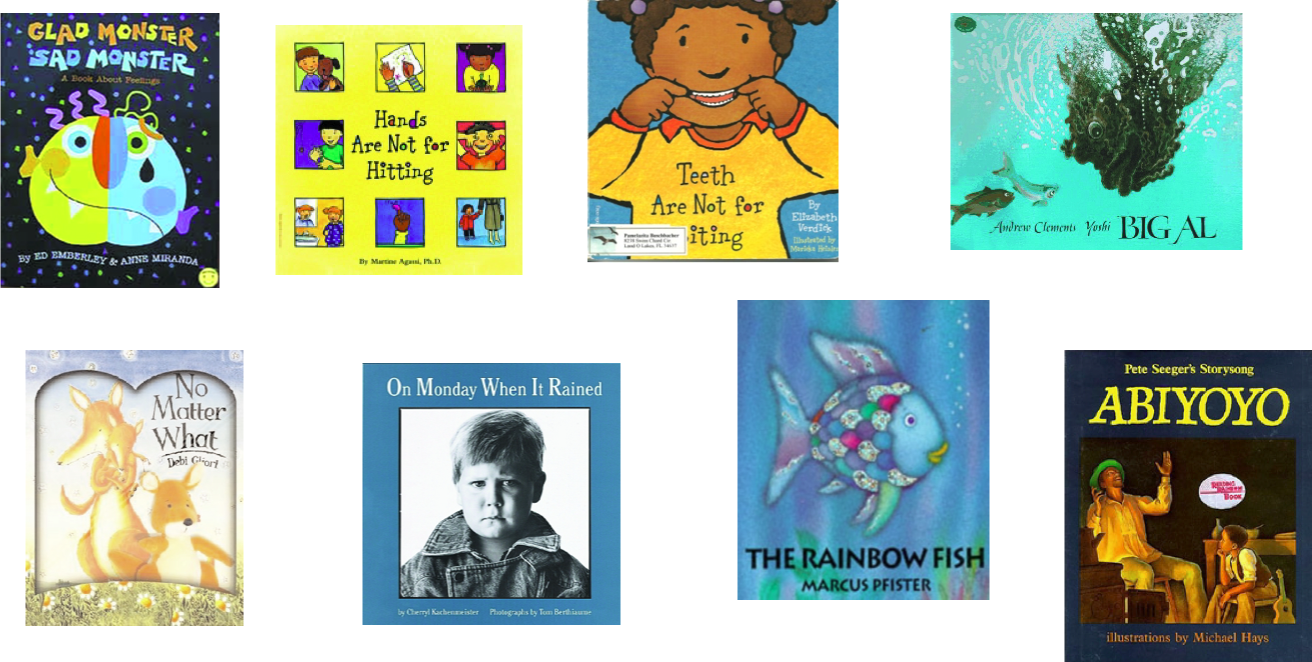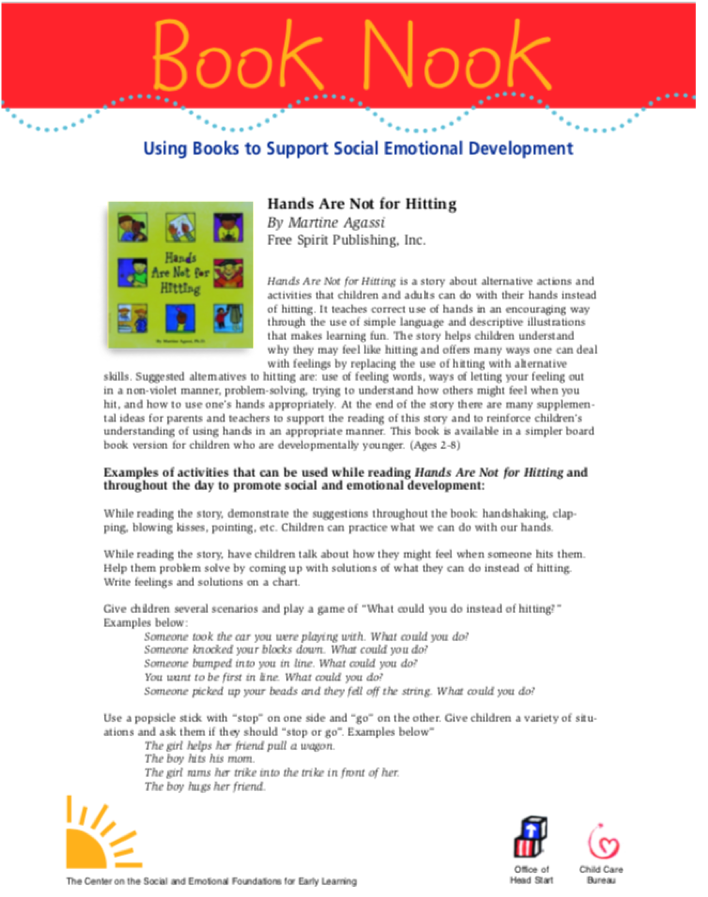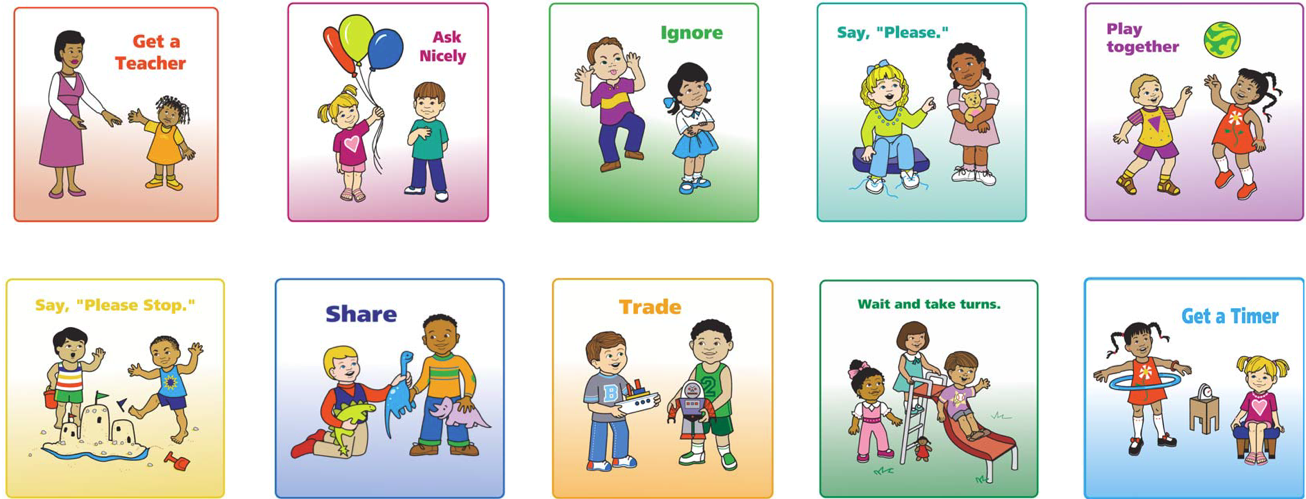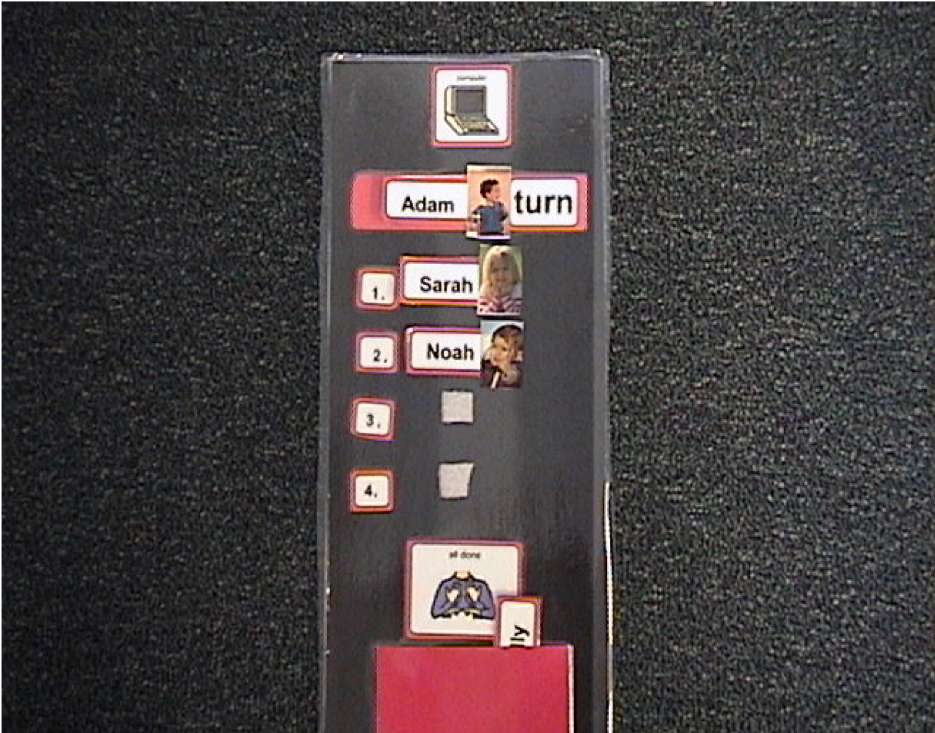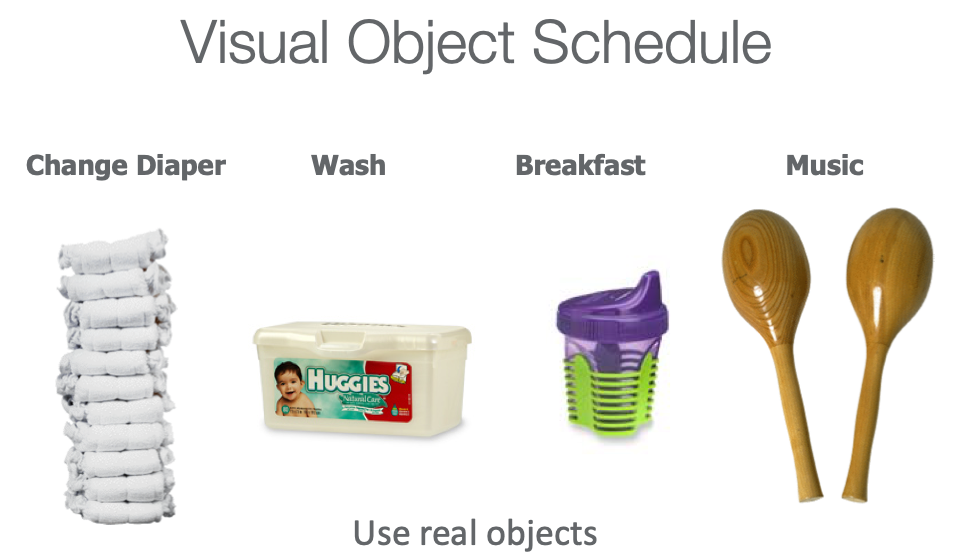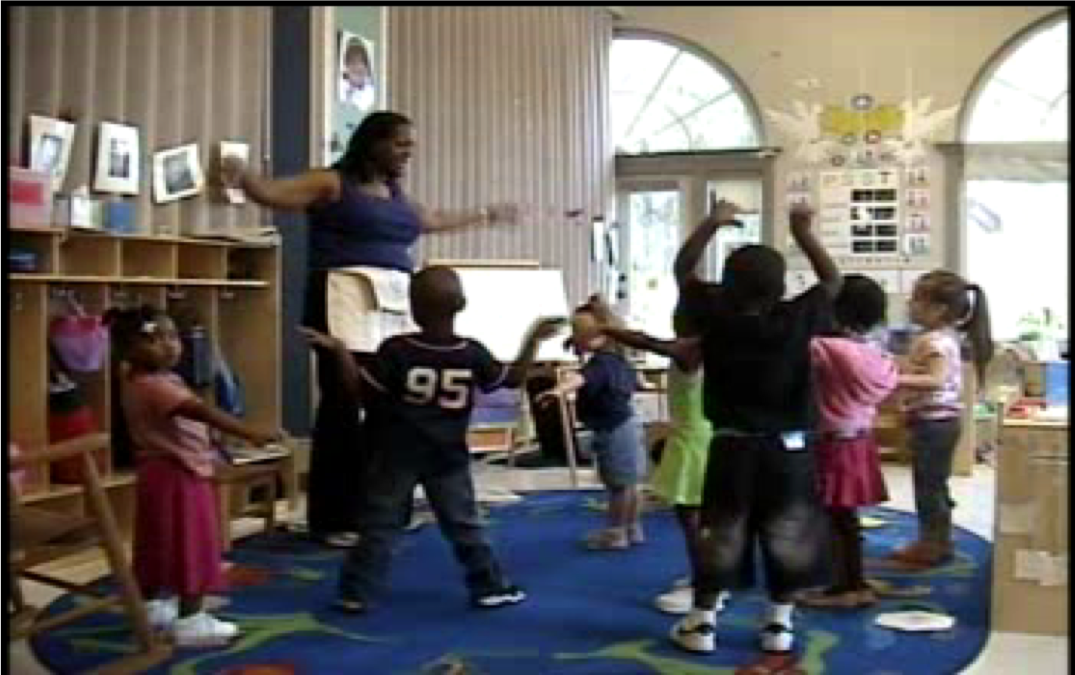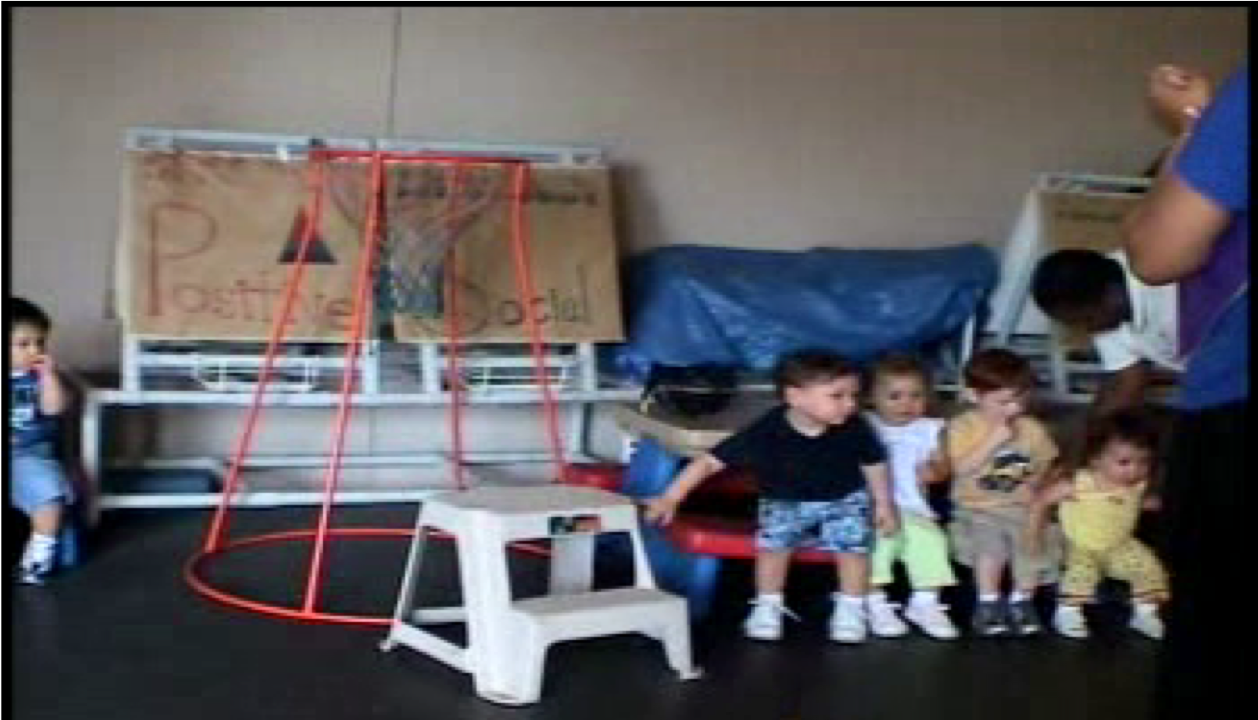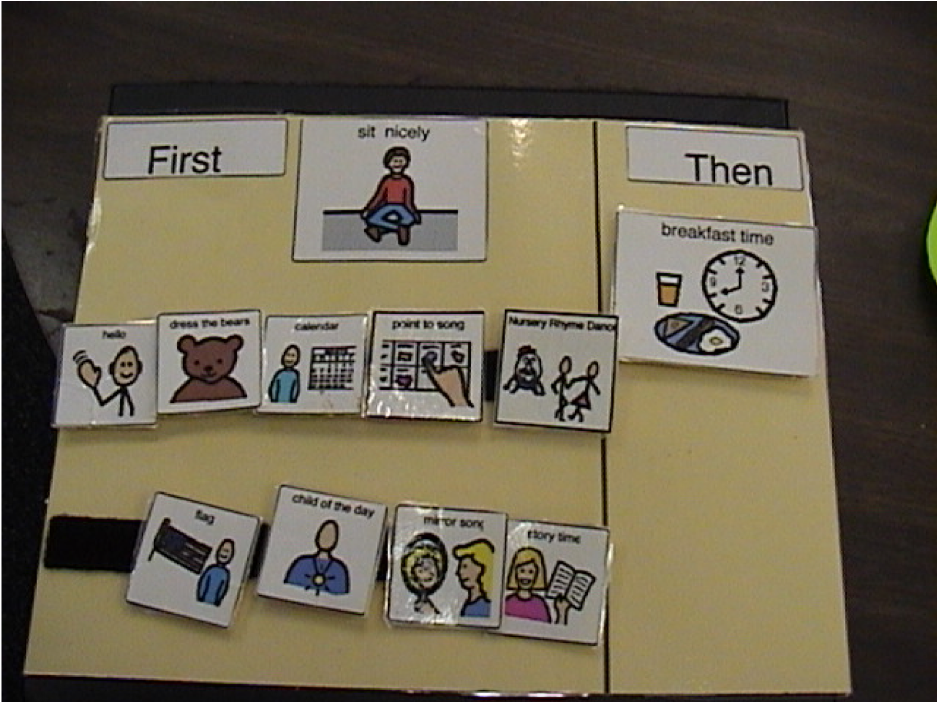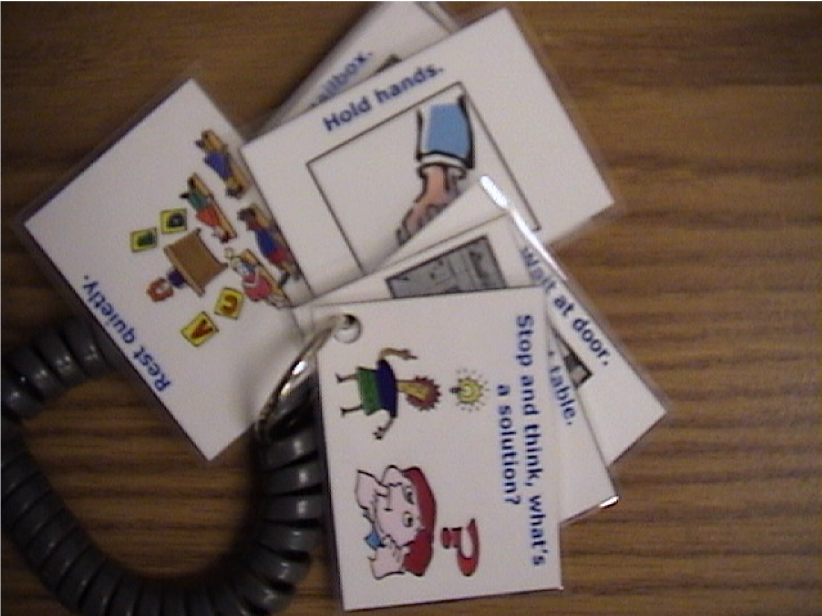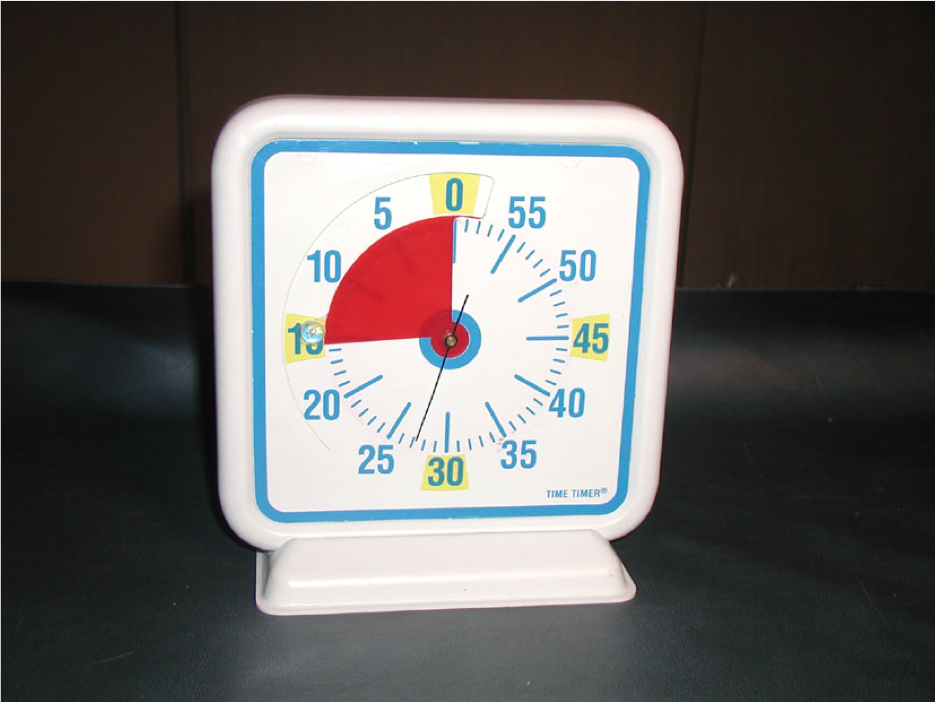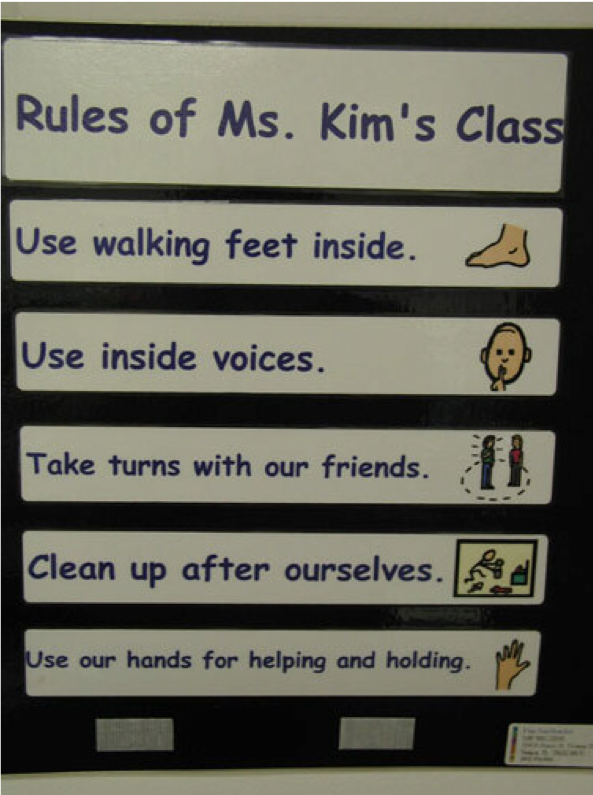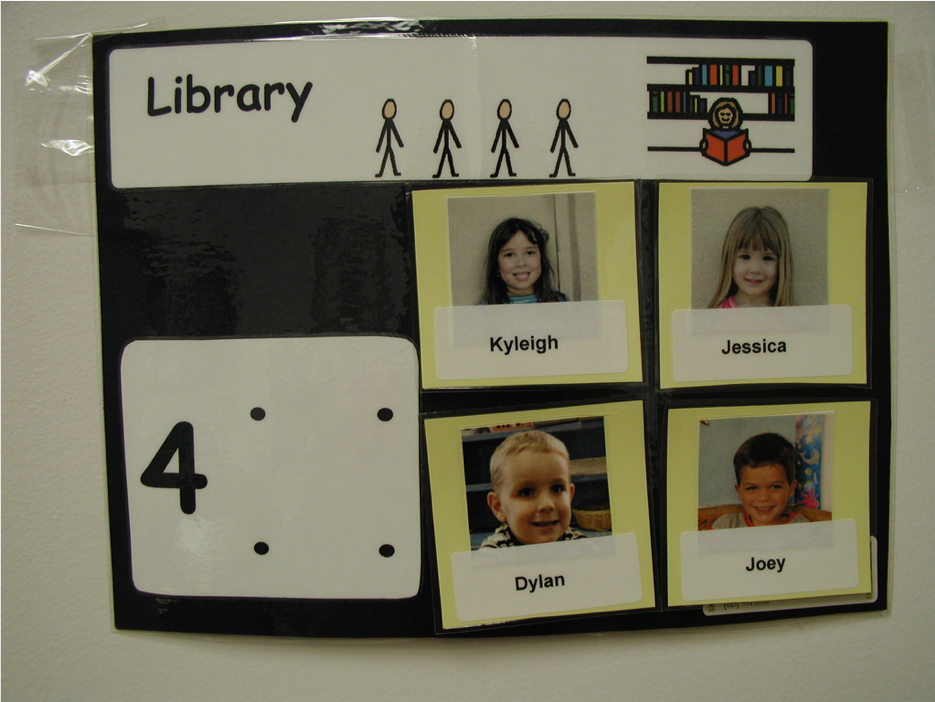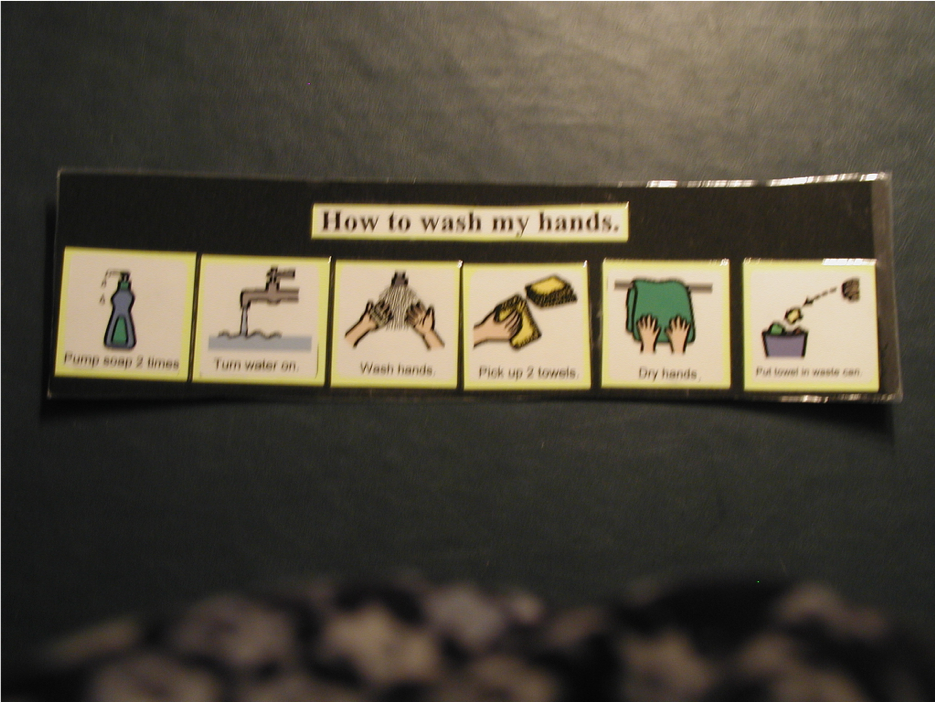Editor's note: This text-based course is an edited transcript of the webinar, Supporting Young Children's Social-Emotional Literacy - Part 2, presented by Pamelazita Buschbacher, EdD, CCC-SLP.
Learning Outcomes
After this course, participants will be able to:
- Describe why it is critical that they support babies and young children's attachment and development of social-emotional literacy skills.
- Identify 2-3 ways in which they can collaborate with parents or primary caregivers to support young children's social-emotional literacy.
- Identify 3-5 evidence-based practices that support young children's social-emotional literacy.
Welcome to part two of Supporting Young Children's Social-Emotional Literacy. In part one, I spoke about how important it is for children to have a large and complex feeling vocabulary, in terms of regulating their emotions and enhancing their successful interpersonal interactions not only with their peers, but also with adults in all of their environments (out in the community, in the home, or in the early childhood education arena).
Review of Part One
NAEYC and Young Children
Responsibilities to children:
- I-1.5—To create and maintain safe and healthy settings that foster children’s social, emotional, intellectual, and physical development and that respect their dignity and their contributions.
- P-1.1—Above all, we shall not harm children.
At the end of part one I spoke about NAEYC, the National Association for the Education of Young Children, and their emphasis on fostering children's social, emotional, intellectual and physical development in a way that respects children's dignity, but also respects them as learners, and above all, that we do no harm.
School and Learning Readiness
- Prioritize and foster positive relationships
- Engage in authentic, integrated and developmentally appropriate learning experiences
- Ensure readiness in all of the child’s environments
- Home, school and community
I spoke about school and learning readiness and that it is our intent as early childhood educators to help children be ready to experience life out in the community, in their homes, and in educational environments in a very productive way, but also out in the playground with their friends.
Emotional Attachment
Emotional attachment Is defined as “the continuing and lasting relationship(s) young children form with one or more adults, …. especially, the child’s sense of security and safety when in the company of a particular adult.”
I spoke in the beginning about the importance of emotional attachment as that continuing and lasting relationship that young children form with one or more adults. Sometimes it might not work so well in the home environment, and the first exposure that a child has in early education in a structured environment might be that place where the emotional attachment is critical.
Take a moment and jot down the name of a person who you felt closest to as a young child. How old were you? What was that relationship with the person? Was the person a parent, a grandparent, your neighbor, a teacher, a therapist? Why did that person come to mind? Take a little time to think about that.
What We Know About Babies’ and Young Children’s Brains and Attachment
Babies and young children are:
- Predisposed to signal their needs to someone who will help them survive.
- An emotional trigger for adults.
- Born with the desire to master & explore their environment.
We know a lot about babies and young children's brains and attachment. We know that children come into the world predisposed to signal their needs to someone who can help them survive. We also know that babies, whether they are animals or human beings, are an emotional trigger in adults. We think they're cute. We also become very upset when children are upset, and they can sense that dysregulation on our part. All children are born with the desire to master and explore their environment.
With all that in mind, regardless of ability, regardless of disability, all babies and young children are predisposed to connect with others. When I started in my practice I was told that children with autism don't have that desire. I found that hard to believe and I have always found that even children on the spectrum of autism want to and need to connect with others. Sometimes they're overwhelmed by social and emotional activities around them, or maybe they have sensory processing disorders and things become very, very overwhelming for them. But at their core, every single child I have ever met is predisposed to similar needs and wants to connect with other human beings.
Young Children Who Do Not Experience Secure Attachments
- Learn not to trust adults will be there for them
- Stay close to an adult to get their needs met
- Learn to not seek out an adult when distressed to help them with their emotions
- Hide their strong feelings and/or withdraw
- Seem disorganized and confused about how to behave in relationships with peers and adults
In the last part of part one, I also spoke about the possible effects when children don't experience secure attachments. They don't trust adults, they learn not to seek out an adult when they are distressed, they may hide their strong feelings, and they may even seem disorganized in their play and in their learning.
Young Children Who Experience Secure Attachments
- Trust their needs will be met by adults
- Trust that adults will be emotionally available to them
- Learn to communicate in a variety of ways
- Begin to manage their strong emotions with help from adults
- Are more affectionate with peers
- Can focus on learning
- Demonstrate more empathy for others
However, children who experience those attachments learn to trust that their needs will be met and to trust adults will be available to them. They learn how to manage those strong emotions when they are jealous, frustrated, or angry. They're more affectionate with their peers. Not only are they more affectionate, but you can see in a 16-month-old how they have more empathy towards others. Then, since they're regulated emotionally, their focus can be on learning other skills.
Think back to your childhood……..
Again, pause just for a moment or two and ask yourself these questions.
In my daily interactions with others, do I identify more with
- The slide describing not having experienced secure attachments as a young child?
or
- The slide describing having experienced a secure or several secure attachments as a young child?
When you're finished with that reflection, please come back to the presentation.
Emotional Literacy
Emotional literacy is the ability to
- read (identify),
- label,
- understand,
- and act
upon the feelings (emotions) of oneself and others in a healthy and socially acceptable manner.
In part one I spoke about emotional literacy and why is it called emotional literacy per se. The intent is to help children to be able to read, or identify, not only their own emotions, but the emotions of others, based on facial expressions, body language, and what's said, and to be able to label those emotions. They need to be able to not only label them but to understand that there's a difference between calm and happy, a difference between frustrated and mad or confused and that there are differences and how to act on those emotions in a pro-social way.
Thus, We Know This about Babies’ and Young Children’s Brains
- Babies and young children are born to connect with other human beings.
- Nature has provided babies and young children with competencies and motivations.
- Nature and nurture combine to define who they are and will become as individuals.
- Nurture means
- A family's culture influences all areas of a baby's and toddler's development, including the social-emotional realm.
- Babies' and toddlers' brains grow through experiencing their world. You are a big part of that world.
Let me return back to what we know about babies and young children's brains. As I said, babies and young children are born to connect with other human beings. There's that nature that all children come into the world with, sometimes referred to as temperament. A child who's maybe a more quiet baby, or a child that's a more active baby, ready to explore the world. Then there's the nurture piece. That's where mommies and daddies and grandmas and grandpas and aunts and uncles and the lady in the grocery store and you and I as educators come into the picture, to nurture the child. It's the combination of that nature and the nurture that combine to help the child form their personality, who they will be as an individual.
Nurture means that we have to consider and value the family's cultural influences in all areas of the baby, toddler, or preschooler's development, even in the social-emotional realm. We need to be grateful for gifts that the parents have given that child, and if there are areas where it's lacking, think about how can we support that family? Maybe that mommy, daddy, grandpa, grandma, aunt, or uncle weren't nurtured as little children. We know that babies' and toddlers' brains grow by experiencing their world, and you are a big part of that world.
Think back to your childhood……..
It's important for us to know who we are and where we are in terms of our social-emotional literacy. Pause for a few moments and ask yourself these questions.
- How would I describe my temperament?
- Do you tend to hold back?
- How would I describe my personality?
- Do you tend to be that gregarious person who likes to take control of situations?
- What was the emotional environment of my home when I was growing up?
- What was the emotional environment of my early childhood years (preschool through grade 2)?
- Were all emotions respected, even those ones that society feels are uncomfortable or negative?
- What emotions were valued in my environments?
The Pyramid Model: Promoting Social Emotional Competence in Infants and Young Children
Figure 1. The Pyramid Model.
The Pyramid Model was developed by identifying evidence-based practices that:
- Promote the social and emotional outcomes of all children
- Promote the skill development of children with social, emotional, and behavioral delays to prevent the need for more intensive supports
- Intervene effectively when children have persistent challenging behavior
In part one, I referred to The Pyramid Model. You can find this at challengingbehavior.org. It is focused on using evidence-based practices to promote children's social-emotional competence from infancy throughout all of early childhood. The Pyramid Model was developed by identifying evidence-based practices, practices that have been researched and used in home environments, out in the community, and within classroom environments to promote children's social-emotional outcomes. At the base of the pyramid, you can see early childhood personnel and families who use effective practices. The next level shows universal promotion of high-quality environments in the home, out in the community, and in educational situations. This level also includes nurturing and responsive relationships for all children, regardless of abilities. Of course, they're young children and they need to be taught, so we will have the targeted interventions that have proven to be effective.
Prevent + Teach + Reinforce
The core thing to remember is that we prevent challenging behaviors by manipulating the environment, using visuals and other resources, and teaching children the skills that they need. Then we reinforce those pro-social behaviors in young children.
What Can Adults Do?
- Label your own feelings
- Label how you think a child might be feeling based on his/her observed behavior
- “Catch” kids being prosocial
- Provide environmental supports
- Teach social-emotional skills through
- Games
- Songs
- Books (Bibliotherapy)
- Apps and computer games
In part one, I talked a little bit about what adults can do. It's important for us to be able to label our own emotions, including how we feel about situations. We can talk about being frustrated on a really noisy day when children are running around, and then we can model how we would use the turtle technique ourselves. It's important for us to label how we think a child might be feeling. This might be health-wise, such as "You seem to have a sore tummy today" (because the child may be grabbing or holding her tummy and bending over), or, "Are you feeling tired today?" because her head's on the desk or she's looking sad. Catch children being pro-social and provide environment supports that I will talk about a little bit more. Teach through fun activities, games, songs, and books sometimes referred to as bibliotherapy. This can even be done with the high-tech of apps and computer games. We have to remember that developing young children's social-emotional literacy is really a human-to-human type of relationship. We also have to remember that the family's culture influences all areas of that baby's young child's development, including the social-emotional realm.
Pause for a few moments and ask yourself
I'm going to ask you to stop again and I really want you to reflect on this. Ask yourself:
- Does our early childhood program welcome parental involvement in their child’s education?
- Do I welcome parental involvement?
- Does my behavior demonstrate that I respect parents and primary caregivers in terms of them knowing the child?
We Can Make a Difference
Now that you've had time to reflect, I want to share with you a few of the resources that you can find on challengingbehavior.org.
Positive Solutions for Families
- Keep your expectations realistic.
- Plan ahead.
- Clearly state your expectations.
- Offer limited, reasonable choices.
- Use “First…, Then….”
- Catch your child being good.
- Stay calm.
- Use neutral time.
One way to connect with parents is through a handout called Positive Solutions for Families. This is a nice handout to share with parents, but it's also excellent for designing a half an hour or one-hour presentation on ways in which parents themselves can connect to what you're doing in the classroom. It's important that parents understand that an 18-month-old is just that - 18 months old. I once was shopping and saw a young mother with 18-month old that wouldn't sit down in the shopping cart. She pushed the child down and said, "You know better." Well, I don't know that an 18-month-old knows better. An 18-month-old knows they want to reach the things that are on the shelves. It's important that we help parents understand that. This handout is also a way to engage parents and help them buy-in to the type of activities you're doing in the classroom. You could even send photos through a website for your school that the parents can click on and see a short video with examples of each of these solutions for families. This might help things go in a more positive fashion.
Backpack Connection Series
Another way that we can connect with families is something called the Backpack Connection Series. It is not a free backpack that you give to the parents, it's something that goes home in the child's backpack. There are several of these one-page handouts that are very descriptive that address topics that families often find challenging, related to behavior and emotional literacy. One is on Understanding and Labeling Emotions. That would be a perfect one to send home at the beginning of the year. It has little tips for parents, but it also helps parents understand what you're supporting in the classroom, and also how to carry over some of the skills that you're teaching within the classroom, using the same language.
Here are some of the topics that you might find:
- Addressing Behavior – How to Help Your Child Stop Biting
- Addressing Behavior – How to Help Your Child Stop Hitting
- Emotions – How to Help Your Child Understand Anger
- Emotions – How to Help Your Child Understand and Label Emotions
- Social Skills – How to Help Your Child Learn to Share
- Social Skills – How to Help Your Child Take Turns
Before you send any of these home, make sure you read them and that you understand what they are because parents may have questions for you regarding a particular handout. It's also important to follow-up, don't just send it home. Your follow-up might be an email or a picture that you send to parents that show them what their child is doing that day. If you don't have that opportunity in your environment or you don't have the resources for that, make sure that there's some type of follow-up. You want to know if the parents are reading them and you want to know if they understand what's in the Backpack Tip Sheet.
"Making Life Easier" Tip Sheet Series
There's a third way in which we can connect with parents and respect what's going on in the home. As I've talked with parents, I've found that there are some problem areas that are pretty consistent across many children. The "Making Life Easier" tip sheet series are tip sheets that were designed specifically for caregivers and parents. They offer evidence and anecdotal tips to prevent challenging behaviors, teach skills, and enhance enjoyment. They are usually three pages with a tip card at the bottom to help remind the parent of the key points in the particular handout. They're very practical and are based on real-life children's situations. Sample topics include:
- Bedtime and Naptime
- Diapering
- Going to the Doctor/Dentist
- Holidays: Strategies for Success
- Running Errands
I think you will find these very helpful for many of your families. Diapering can be a pretty problematic time, especially when you have a 14-month-old who would rather be running around or playing with her train or swinging on the swings than getting her diaper changed. The tip sheet on holidays and strategies for success is helpful because we know that holidays can sometimes be highly-charged emotional situations with a lot of breaks and schedule changes for young children. We know how much they need schedules, and when there are changes in their routine it makes it tough, not only for the children but for the parents or for any adults involved. Here's an example of like a tip card that's at the end of the Making Life Easier for Diapering.
1. Prepare your child for the diaper change.
- Use a transition warning.
- Provide choices.
- Empathize with child’s feelings.
- Provide a transition object.
- Use “First…,Then….” statements.
- Use step-by-step pictures.
- Encourage your child to be a “helper.”
2. Change the diaper.
- Reduce distractions in the changing area.
- Describe what you are doing in a fun way (ex. song, rhyme, etc.).
- Describe child’s emotions & yours.
- Let your child help.
- Use “First…., Then….” statements.
- Use interesting distractions (ex. toy, stickers, book, songs, etc.).
- Say, “All done” to end the routine.
- Plan something that the child would enjoy when finished.
Celebrate successes along the way!!!
The first part is to prepare your child for the diaper change, which is using a transition warning. This might be something like, "(sniff, sniff) I smell something. Uh-oh, I think it's time to change a diaper." You might hold up a diaper as the transition warning as well. Provide choices for the child. If the child's running around, maybe you can choose a different place than the changing table to change the child. Another idea is to let the child hold something in his hands, such as a lovey or small toy. Another option is to let the child watch a video while you change the diaper. I usually don't like that, but it's something that can help a child be a part of it. It's important to label a child's feelings. "Oh, I know you were having so much fun playing with the blocks. First, let's change your diaper, then you can play with the blocks more. Here, hold a block while I change your diaper." Using a block as a transition object can help the child into it. Encouraging the child to be a helper by holding the diaper is a great thing to do with a toddler.
As you're changing the diaper, make sure to minimize distractions in the area so the child's not trying to roll over to get to the dog or a toy. Describe what you're doing. For example, "Okay first, we're gonna take off the poopy diaper. We'll have to put that in the trash." You can make faces and have fun. Let the child help. Maybe the child can throw the diaper away. Just as when you prepare to change the diaper, use first, then statements. "Remember, first change your diaper, then you can go play with the blocks." Have interesting distractions. One mom that I worked with had twin little girls and diaper time was really difficult. Usually, they both needed their diapers changed at the same time which made it more difficult. We found that they loved stickers, so in the diaper area, she had pages of stickers. She'd usually keep just one page out so it wouldn't be too much for the girls. When she was changing their diapers, the girls would pick two stickers and would spend the entire time playing with them, putting them on, off, on, off, on, off. This was a great distraction that worked well with both girls. Also while the second one was waiting, she had her two stickers and she was doing on, off, on, off, on, off. Sometimes singing a song helps. For example, ♪ This is the way we change your diaper ♪ ♪ Change your diaper, change your diaper ♪ That engages a child. Another option is to sing the ABC song if that fills enough time to get the diaper changed. You can sing the ABC song together and then signal all done when you're finished.
Scripted Stories, Social Stories, Routine Scripts
- Social Stories© or Scripted Stories are short picture book stories written in a special style and format.
- Teach social skills to children.
- Provide accurate information about those situations that a young child may find difficult or confusing.
- This tool has proven to be effective for older toddlers and preschoolers.
- Provides the perspective of self and others.
- Examples: I Can Share (Toddler version), Tucker Turtle, I Can Be a Super Friend…….
Other things that we found to be very successful are scripted stories, social stories, and routine scripts. There's a lot of research to support these You'll find several examples of scripted stories for times that have been problematic for children around social interaction or schedules on challengingbehavior.org. There are also social stories which were originally designed in the 90s that teach social skills to children. They are short picture books that are heavy on pictures and light on the printed part. I Can Make Good Choices When I Feel Upset! was designed by a few teachers that I worked with. They followed the formula for a social story and used clip art to create this book for a child. It helped her understand how to better handle situations in which she became upset rather than biting and kicking.
Figure 2. Routine script for going to the hospital.
Figure 2 shows a routine script I designed for a little boy that I suspected was having seizures. We knew that he would have to have a 24-hour EEG and we weren't certain exactly how it was gonna go, so his dad went to the Children's Hospital and asked the nurses to describe for him what was going to happen to his son. He wrote everything down and they allowed him to take pictures. Using this information to make the routine script for the child enabled him to go through this procedure very smoothly. This was a child with autism spectrum disorder, and indeed, he was having seizures. I described it more as a routine script because it told him the who, what, when, where, and how in the sequence of what was going to happen. It was more about the sequence than the social interaction.
Figure 3. Routine script for running errands.
Another routine script book that I absolutely love is one for running errands. Figure 3 shows one of these. It's one of those picture books from a dollar store in which I insert the steps that we go through, whether it's going to Home Depot, the grocery store, Target, or any other store. The parent would slip in a photo of whatever the store is going to be in the first page of the book. The rest of the story is about things they would do on that errand, including "We drive in the car." It's a very simple script with a photo and a little bit of clip art. The photos were designed for one child, but I've used it with many children and found it to be helpful.
Figure 4. Social story.
Figure 4 shows a social story called Michael is Moving. This social story was about Michael moving from his grandparents' house to having his own bedroom and the emotional turmoil that would be in the boxes involved in the move. This social story it enabled him to have a very smooth transition to his new home. Evan Rides The School Bus Nicely is based on the formula for writing a social story and was designed by three teachers. I edited the book a little bit just to take away some of the extra language and make the sentences more developmentally appropriate.
Figure 5. Rule book.
Sometimes there are rules children need to follow and we need to have rule books, such as you see in figure 5. I've had several children who had difficulty with wearing their shoes and socks, either putting them on or taking them off. There were often temper tantrums, so we designed a book that tells where you wear your shoes and socks and where you can take them on and off. The challenging behaviors dissipated after using this rule book.
The Turtle Technique
Figure 6. Tucker Turtle Takes Time to Tuck and Think.
Another strategy you can use is the Turtle Technique, which I talked about in part one. The book Tucker Turtle Takes Time to Tuck and Think can be found on challengingbehavior.org, as well as many other resources that you can download, print, and use immediately in your classrooms. The resources related to this book help children understand feelings that are very strong and might be viewed as negative. The Turtle Technique teaches them to stop and to go inside their shell and take a deep breath, and then to come out and think of a solution. It's a nice technique for teachers, educators, and parents to use when we get frustrated or upset as well. You can describe how you feel and model for the child how you use the Turtle Technique and go through the process. You'll be surprised that it helps you as an adult calm down and come up with solutions.
Social-Emotional Books
- Tell a good story in their own right & are well-crafted
- They are an easy and fun way to be more intentional about supporting social-emotional development
- Are written explicitly about feelings/behaviors
- Address challenging issues within a storyline:
- Directly as part of the storyline
- Indirectly by including coping/problem solving as part of the broader story
- In real-life situations
- Build feeling vocabularies and/or provide information about behavioral expectations
- Can provide information on friendship skills, emotional literacy, empathy, impulse control
- Can help children cope with a range of challenges: broken toys, friend not sharing, new sibling, sibling rivalry, moving, unemployment, deployment, incarceration, divorce, death
- Can help children generalize to different settings/people/situations
- Can be used as the starting point for a teaching experience
Figure 7. Examples of social-emotional books.
There are many commercial social-emotional books available. Figure 7 shows some of my favorites. I particularly like Hands Are Not For Hitting. This book is part of the Book Nook book list, which provides a list of many books that are proven to be very successful with children. Hands Are Not For Hitting has been expanded on with a Book Nook handout (available in the handouts for this course and on challengingbehavior.org). The Book Nook encourages you to read the book to children as a starting point, but it lists all kinds of activities and songs that go with the story. All of the activities would allow you to create a thematic unit around what our hands are for. Although the title for this book and the title for Teeth Are Not For Biting have not in them, they do talk about things you should use your hands (and teeth) for.
Figure 8. Book Nook for Hands Are Not for Hitting.
Figure 8 shows an example of a Book Nook and is the same one you have a handout for. It describes songs that you can use with the children during group times or one-on-one time, other follow-up activities, art activities, and crafts activities that will drive home what hands are for. One of the things I like about this series (Teeth Are Not For Biting, Hands Are Not For Hitting, and Feet Are Not For Kicking) is that the last few pages of each of these cardboard books have suggestions for parents. This gives you additional information you can share with parents and enhance your communication between the classroom and home.
The wonderful thing about many social-emotional books is that they tell a good story in their own right and they are well-written. They're easy and they're fun. Not only are they fun for children, but they're also fun for the adults to read. We can get very animated in doing it. One of the nice things about books is that you're sitting close to the child as you read. It really is a human-to-human interaction rather than technology. Many of them address challenging issues for young children, including being jealous, angry, or frustrated. These emotions are addressed are within the storyline and how a child can deal with those strong emotions. This helps build their feeling vocabularies.
They provide information on friendship skills. One time I worked with a 16-year-old boy who had a language learning disability. One of the saddest things that I ever heard was when his mother said what was so sad for her was not that he had the language learning disability, but that he was 16 years old and he had never had a friend. No one should ever reach three years old or even five years old and never have had a friend. Everyone deserves and has a right to have a friend. That's why it's so critical that we use these books and we use activities to support young children's emotional literacy. This will help them understand themselves, interact with one another, have empathy towards others, and be able to control their impulses in a very pro-social way.
We really have to think about prevention and teaching, not just assuming that it's going to happen because they see it around them. They may not experience these things in the home environment because their parents never experienced it. We don't know. That's why it's important for us to collaborate with the home and understand the home. Parents are experts on their children, and we only visit the children's lives for a short period of time. These social-emotional books help children deal with a range of challenges that will happen in their lives, like broken toys, a video game that doesn't work, friends not sharing, having a new baby brother or sister, sibling rivalry, and moving. The little boy that I helped create the book (Michael is Moving) for actually moved four times in two years. That was a lot for a child who has autism spectrum disorder, has a seizure disorder, and is only four years old. Even if he just was a young four-year-old, that's a lot.
Other books address unemployment, deployment, incarceration, divorce, or death. There are many families in the military where Dad or Mom are gone for 11 months at a time. It's important to have a social story that would support a child through that. Think about how many of our children have someone in their family who is incarcerated, going through a divorce, or dealing with death, whether it's the death of Grandma or Grandpa or the death of a favorite pet. We all deal with it, and young children deal with it too. We can help children learn to generalize to different settings. For example, if a child gets his haircut one place, he can also get his haircut at this other place with a different stylist. Maybe she learns to go to one grocery store, but then he can go to another one. They all started as a starting point for teaching experiences.
Fingerplays, Nursery Rhymes, Bodyplays and Songs
I just came across a really cool CD. We know we like to use music to teach concepts to our children. This CD is called Gentle Hands. It's available through Free Spirit Publishing, but probably Amazon too. They're piggyback songs, so they're social-emotional songs that are overlaid on the melody of a familiar song, such as Old MacDonald Had a Farm. Again, we can use this in our communication from school to home. We can send the words home and the parents are familiar with the ABC song or Old MacDonald Had a Farm, so they have the melody, and they can sing it at home, and the child's getting it in both places.
Visual Environmental Supports
- Emotion Boards
- Emotion Sign-in/Sign-out Charts
- Feeling Face Collage
- Solution Kit (www.challengingbehavior.org )
- Turntaking
- Classroom Rules (4-5)
- Stated prosocially
- Job Charts
Then within the classroom, we have visual supports. I'm going to show you some examples of emotion boards and emotion sign-in or sign-out charts. You very well may be using some of these in your classroom. A feeling face collage is a helpful visual support. This would have a variety of emotions that children could point to or could identify how they're feeling without even saying how they're feeling because it's represented by a visual. One of your handouts is a feeling board that I modified from the feeling board that is on challengingbehavior.org. Visuals of classroom rules and of turn-taking are also helpful, as well as job charts. I had a classroom where there was a lot of physical and verbal fighting between children about who was going to do what job. Just by setting up the visual of a job chart and rotating children through the jobs, they could see, "Oh, next week, I'll be the line leader, because today, I'm the Caboose. This week, I'm the Caboose." It also helps children delay gratification. These visual supports also help children take responsibility for being a valuable part of their community.
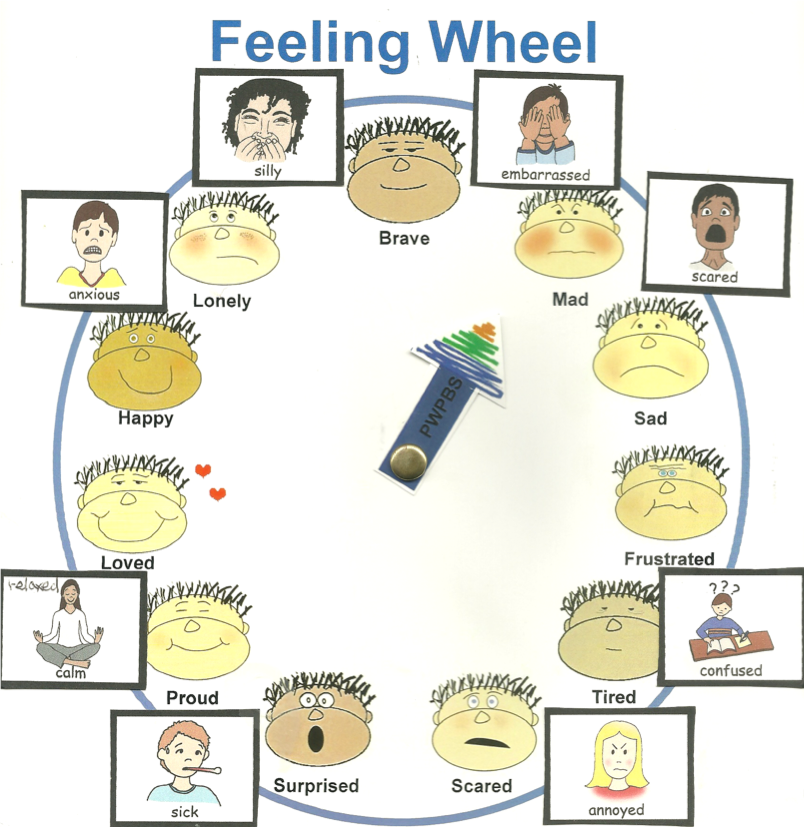
Figure 9. Feeling Wheel.
Figure 9 shows the feeling wheel that I modified from the one on challengingbehavior.org and is what you have as a handout. You may find that the additional emotions are too overwhelming for your children. If so, put it on the back burner and just use the original chart. To use this, print it out on cardstock, then cut out the arrow, make a hole in the center of the circle, then attach the arrow with a brad. Now the child can use the arrow to point to how he or she feels. The reason I modified the feeling wheel that's on challengingbehavior.org is that I had children who had emotions that weren't satisfied by the ones that we had there. This is why we added annoyed, scared, confused, sick, calm, anxious, silly, and embarrassed.
Figure 10. Solution Kit.
The Solution Kit seen in figure 10 can also be found at challengingbehavior.org. I would suggest printing it out on cardstock and then cutting the individual cards out. You could even laminate them to make them last longer. Make sure that you have an attractive container that you can set on a table accessible to children in multiple areas of the room to put the Solution Kit in. Teach children that if there's a challenge they're facing with a peer, they can look at the Solution Kit for ways to solve the problem. For example, get a teacher, ask nicely, or ignore. It's important to teach children how to use a solution kit. There are resources on the website that will guide you in how to use the solution kit and teach these solutions to young children, as young as three years old.
Figure 11. Turn-taking.
Figure 11 shows a turn-taking visual that I designed for a classroom in which during center time the children would argue about who would get to use the computer. In talking to the teacher, center time only allowed for four children to work on the computer. We set this up and during circle, four children would identify who wanted to be on the computer and they would put their names in order on to this visual. You can see that Adam was the first child to have a turn. We used an auditory timer that would signal to the child when his or her turn was up, and then they would put their name in the pocket at the bottom. We also kept track of who had had turns on Monday so that four different children could have a turn on Tuesday. It proved to be very effective.
Transitions
Transitions are probably the most common problematic time for young children, but sometimes even for us as grown-ups. I'd like you to take a few moments and ask yourself these questions. For this reflection, I want you to really be honest.
- How well do transitions go in my early childhood classroom?
- If all or some go well, what are we doing to make that happen?
- If they usually do not go well, what can we do differently?
I hope you took some time to think about those questions. Now I have a few ideas to share with you that are evidence-based.
MOVE
M – Model for success
O – Organize and prepare ahead of time/reduce unoccupied waiting
V – Visual strategies clarify routines and changes
E – Excite the children: use transition strategies
Keep in mind this acronym, M.O.V.E. M is for Model for success. We have to demonstrate how to work through the transition. Circle time is a great time to model things, but we as adults also model it and talk through what we're doing. O is for Organize and prepare ahead of time. We have to reduce unoccupied waiting because when kids are unoccupied and they're just waiting, trouble's often not far behind. V is for Visual strategies. Visual strategies have proven to be very helpful in helping children move through transitions. They are also helpful or changes in routine, such as the speech and language therapist might be sick that day and she's not going to see four of the children in the classroom. It'd be good to have a visual showing that Mrs. Johnson is out today, and what the children will be doing instead. E is for Excite the children about those strategies. Strategies could be songs or the way you march out of a classroom, like a monkey, like a turtle, or like a choo choo train. Have fun.
Arrival/Greeting Transition
For EACH CHILD:
- Give a warm welcome and a smile at his/her level
- Have a short conversation
- “How are you today?”
- “Label” the child’s emotional state and your own
- If child is upset, acknowledge it and reassure the child
- Do or say something related to your theme or day’s activities
- Assist in transitioning to the morning activity by using a song and/or a visual…
In part one, I spoke about the arrival/greeting transition, which all children have to go through at the beginning of the day, and the dismissal, or leaving transition. It's important for us as adults to remember to get down to the child's level and to smile. There needs to be an adult to welcome a child to the classroom at their level. Take a knee so that you're eye to eye with the child. Or if they're carried by Mommy or Daddy into the classroom, then you don't need to take a knee but maintain eye-to-eye contact. Tell the child how you are that day and let the child have an opportunity to let you know how he or she is that day. If it's very apparent what the emotional state is, perhaps a child's upset or very tired and leaning on Mommy, label it. Then have a way to transition that child into a waiting activity. Some early childhood programs have a free time where the children can go to the different centers to start the day, or they might have a table with an art activity or a book waiting for a child to start the day in a quiet way. As you look at your program, reflect on that. Do you have a way in which children are greeted in a consistent manner every day?
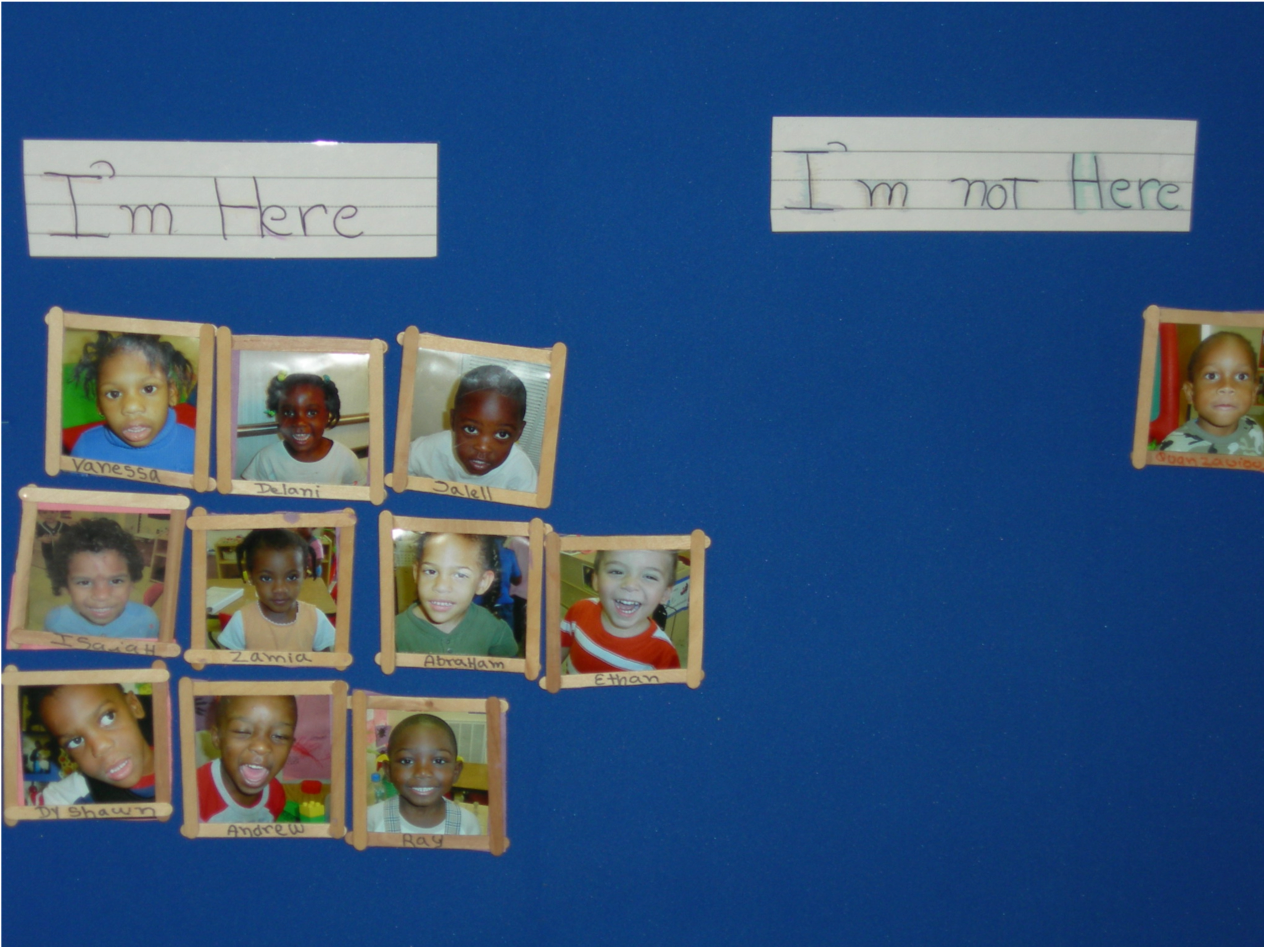
Figure 12. I'm Here chart.
Figure 12 shows a picture of what one school used to start their day. The teacher would hand the child's picture to the child and the child could put it under "I'm Here." Then gradually, all the Not Heres would end up under "I'm Here." This is also a nice visual then to take to circle time to talk about who's there today and who's not there today.
Figure 13. Visual Object Schedule.
Sometimes we use visual objects to help children understand. This is especially helpful for very young children or children with complicated disabilities. Figure 13 shows a schedule using objects where the day begins with a diaper change, then it's time to wash hands. I don't know that I would use the wipes to wash hands, but you could use a picture of a sink instead. After washing hands, it's time for breakfast and then it's music time. Each picture is an object that represents what will happen next in the schedule.
Figure 14. Transition to outside.
The teacher in figure 14 was an expert at transitions. She had cards with pictures of different things such as a plane, a train, a monkey, and a choo choo train. She would hold up a picture of how the children were going to leave the classroom or come back into the classroom, either flying like a plane or going like a choo choo train or being a monkey as they moved and transitioned from place to place. It distracted them, it engaged them, and they were very willing to do what needed to be done. After doing this for a while, the children would choose how they wanted to come into the classroom, marching like a robot or flying like a plane. She kept track of who made the choice so that a different child would make the choice for how they were going to walk in or out or to another area the next time.
Figure 15. Transition inside.
The teacher in figure 15 had eight children in her classroom. One teacher had four toddlers sit on a bench and that was how they lined up. They had a space to sit on. The assistant teacher had four other children sitting on a different bench. That way they weren't all over the place. The benches gave them a place to organize and be ready to transition to their snack time.
Figure 16. Circle Time Activity Schedule with Transition Cue.
Some of you may have a picture schedule of what's going to happen for the day in your classroom. Some children even need a picture schedule for what's going to happen within an activity. There were a few children in one classroom that needed a picture schedule for circle time. The children were able to pull off cards from the Velcro of what was completed as it happened and could see what else was going to happen during circle time. Each card represented something that would be done during circle time. As a piece was removed, the child could hear the Velcro being pulled away and could see the number of activities becoming less and less. A mini schedule within an activity might be helpful for some children in your class.
Figure 17. Transitions Cue Ring.
Sometimes these rings are very nice to use as cues for transitions. For one particular program, the children held hands as they went from place to place and they had to wait at the door. By holding up this visual, the teacher didn't have to keep repeating herself. Also, just by holding it in place the children all knew what to do. It was very calming and was also helpful when she had a substitute teacher to know what the procedure was for transitions or lining up.
Figure 18. Visual Timer.
Timers are marvelous. Figure 18 shows a visual timer, which is not noisy in a very busy classroom. These are great for children who are visual because as the time ticks off the red area becomes less and less. Auditory timers work very well for some children too. You can also just count to ten to help children get ready for a transition.
Figure 19. Classroom Rules.
In part one I discussed classroom rules and that it's important to keep them simple. You should have no more than four to five rules. You might want to start out with just two. Figure 19 shows the Rules of Ms. Kim's Class. In Ms. Kim's case, we started out with two rules, taught the children these two rules, and practiced them in a circle situation before adding more rules. Initially, Ms. Kim had told me, she said, "I don't want any running, I don't want any yelling, and I don't want any hitting." I said, "Well, let's try to picture it and write it in a way that is pro-social for the children." Very quickly, she was able to build up to five rules, and those were the rules for the entire year. Sometimes there are special occasions where we might have to add an extra rule for a short time, so we put a couple of extra pieces of Velcro at the bottom for that.
Figure 20. Name Tage and Center Self-Regulation Boards.
Name tags and center, self-regulation boards are marvelous. Figure 20 shows one that we use for children to sign in to a center area. Only four children could adequately be in the library area without chaos, so there's the number four, there are four dots, there are four iconic beings, and there's a symbol for a library. At circle time, the children would decide which center they wanted to start at, and they would take their picture and place it on a piece of Velcro. In one classroom I observed them using a timer to help transition to different centers. When the timer would go off after 10 to 15 minutes, a child could choose to leave the center and go to a different one. Having a board like the one shown in figure 20 helped children to see when a center was full and they could then go to a different center.
Figure 21. Boardmaker Handwashing Task Analysis Strip.
Figure 21 shows a handwashing task analysis strip, listing the steps to washing hands. We see these even in restaurants where the employees are reminded how to wash their hands. You place it above the sink in the bathroom and teach the child how to use it, and very quickly, the children know the steps and can do it on their own and they feel like big boys and big girls.
Social-Emotional Literacy Outcomes of Using Visual Tools in Your Classroom
- Increased child independence
- Empowerment of children
- Increased self-esteem and self-confidence
- Improved peer interactions
- Increased understanding of expected behavior
- Preparation of children for changes in the day
- Increased understanding of directions
- Meaningful class participation
- Smoother transitions
- Increased success throughout the day
- Guidelines for a substitute teacher
- Reassurance for the children that even with a substitute teacher, the day will be the same
By using these visuals tools in your classroom, you can support children's social-emotional literacy. It will help the children become more independent and they will feel empowered and a part of the community. This will increase their self-esteem and their self-confidence, that they're big boys and big girls, even when they're just two, three, or four years old. You will also notice improved peer interactions, as we know children learn so much from each other. Children will have an increased understanding of what's expected in an environment, be it at home, out in the community, or in an early childhood program. Visual tools also help prepare children for changes. We don't do enough of that. We just assume they go with the flow, but we need to help children prepare for changes in the day such as when the teacher is going to be out, when someone gets hurt, or when a child moves away that used to be in their classroom.
Other positive outcomes include increased understanding of directions, which is an important skill for life. They're going to receive lots of directions they're going to have to listen to and pay attention. There will be more meaningful classroom participation that's enjoyable for all and smoother transitions for teachers and for the children. Children will experience continued success throughout the day. When you have a successful day, you're a happy person. If children have a successful day, they'll be happy children. Visual tools also provide guidelines for the substitute teachers so that they, as much as possible, do the same things that children are expecting. This is reassuring to the children and to the substitute at the same time, and the teacher who's left the information behind.
Resources
www.pyramidproducts.com
www.socialstories.com
www.do2Learn.com
www.lessonpics.com
www.challengingbehavior.org (Now called The National Center for Pyramid Model Innovations)
www.freespirit.com
www.csefel/vanderbilt.edu
www.pinterest.com – Managing Behaviors & Social Skills
I've left you with a few resources that I find to be very valuable. They're not the be-all end-all of resources. I'm sure that you in your experience have your own personal resources. Share them with other people, don't keep them to yourselves, because we're in this together. Share them with families as well.
References
Elkind, D. (2014). Parenting on the go: Birth to six, A to Z
To earn CEUs for this article, become a member.
unlimited course access | $99/year
Join Now
